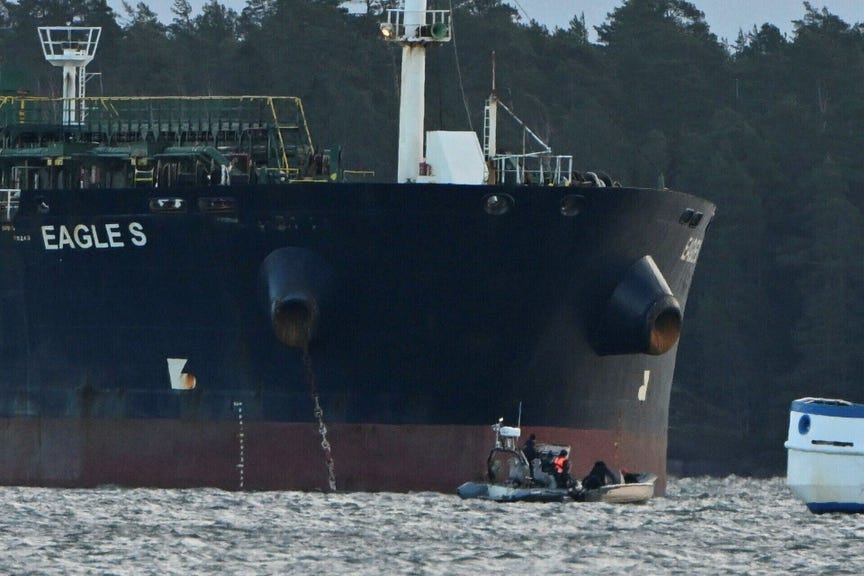The Incident and Its Repercussions:
The suspected grounding of the vessel Eagle S, dragging its anchor for approximately 100 kilometers along the seabed between Estonia and Finland, caused significant damage to crucial data and power cables. This incident, highlighting the vulnerability of underwater infrastructure, prompted a swift response from Finnish authorities. Police special forces boarded the Eagle S, detaining the vessel in a port near Borgå. The incident underscores the growing threat posed by suspected Russian hybrid warfare tactics in the Baltic Sea region, employing sabotage and disinformation campaigns to destabilize the region. The damage to the cables, vital for communication and energy transmission, serves as a stark reminder of the potential for disruption and the need for enhanced security measures. This incident has triggered a significant response from NATO and regional powers, leading to high-level discussions and reassessments of defense strategies.
The NATO Summit and Hybrid Warfare Concerns:
In response to the cable damage and broader concerns about Russian activities in the Baltic Sea, Estonia and Finland convened a NATO summit in Helsinki. The summit, bringing together leaders from countries bordering the Baltic Sea, focused on addressing the escalating threat of hybrid warfare emanating from Russia. Experts warn that NATO’s traditional focus on conventional warfare leaves it ill-equipped to handle the multifaceted nature of hybrid threats, which encompass sabotage, disinformation campaigns, and cyberattacks. These tactics aim to sow discord, undermine public trust, and destabilize political systems, potentially bolstering extremist groups and weakening democratic institutions. The summit aimed to develop a coordinated response, strengthening NATO’s presence in the Baltic Sea and improving information sharing between military, civilian, and private entities to bolster resilience against such attacks.
Expert Analyses and Recommendations:
Tormod Heier, a professor at the Norwegian Defence Academy, emphasizes the critical threat of hybrid warfare in the Baltic Sea. He argues that Russia employs these tactics to instill fear and anxiety within populations, potentially fostering political climates that favor extremist parties and erode the political center, ultimately fragmenting societies. Heier advocates for an increased NATO presence in the Baltic Sea to deter potential aggressors and demonstrate vigilance. He also stresses the importance of enhanced coordination between military, political, and civilian entities, including improved information sharing and joint crisis management capabilities. This integrated approach is crucial for effectively mitigating the complex challenges posed by hybrid warfare. He points to the increased cooperation among various stakeholders around the North Sea following the Nord Stream pipeline sabotage as a model for enhanced security collaboration.
Magnus Christiansson, a lecturer at the Swedish Defence Academy, views NATO’s increased presence and the Helsinki summit as crucial signals from Baltic Sea nations. These actions underscore the gravity of the cable incidents and demonstrate a united front against unacceptable aggression. Christiansson highlights the complexities surrounding the Russian "shadow fleet" and the delicate balance between responding to provocations and upholding international law, such as the United Nations Convention on the Law of the Sea, which governs maritime activities. He cites the case of a Chinese vessel, later transferred to Denmark, where the Law of the Sea played a role in the proceedings, illustrating the legal considerations involved in such situations.
The Growing Threat of Hybrid Warfare:
The Eagle S incident and subsequent NATO summit highlight the escalating threat of hybrid warfare in the Baltic Sea region. Russia’s suspected involvement in these activities raises concerns about its broader strategy to destabilize the region and undermine Western alliances. The use of sabotage against critical infrastructure like undersea cables demonstrates the vulnerability of interconnected systems and the potential for disruption. This incident emphasizes the need for improved surveillance, enhanced security measures, and a more coordinated response from NATO and its allies. The increasing sophistication and frequency of hybrid attacks demand a comprehensive approach that integrates military, political, and civilian capabilities to effectively counter these evolving threats.
The Need for a Coordinated Response:
The Helsinki summit serves as a platform for NATO and Baltic Sea nations to formulate a cohesive strategy to address the growing challenge of hybrid warfare. The discussions focused on concrete measures to secure critical underwater infrastructure, strengthen NATO’s presence in the region, and counter the activities of Russia’s shadow fleet. Improved information sharing between military, civilian, and private entities is essential for building resilience against hybrid attacks. The summit also highlighted the need for a unified political response, projecting a clear message of resolve and demonstrating the collective determination to safeguard regional security. The complex nature of hybrid warfare demands a comprehensive and collaborative approach, involving not only NATO but also national governments, private sector stakeholders, and international organizations, to effectively counter this evolving and multifaceted threat.














